The layout of modern private houses and cottages provides for the presence of the foundation ...
|
|
To improve the clutch of concrete slabs, rough or porous surfaces with ... |
An important point of breeding bees arranging a safe place for wintering, ... |
Stove tiles: Installation instructions
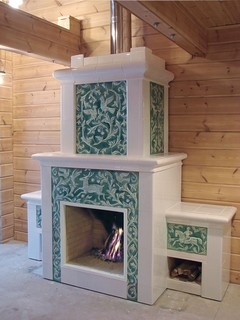
The most standard finish of the surface of the fireplace or furnace is brick. But not always such a design is successfully combined with the design of the room. Facing with tiles or tiles will help create an elegant and unique type of finished heating device. The article will talk about the finish of the stove with tiles.
Content:
- What are the tiles for the furnace
- Distinctive properties of lining with tiles
- DIY stove tiles
- Clay preparation for tile
- Formation of the Model of Trampers
- Formation of tiles for stoves and fireplaces
- Preparation of a furnace and a solution for facing the stove with tiles
- Facing tiles
What are the tiles for the furnace
Tiles are a type of tile of a special box. A similar type of cladding has been used for centuries and is a unique material for design.
Tiles for a furnace photo
A significant difference between the tile and the standard tile is a special shape: the flip side is presented in the form of a box and is attached to the surface of the heating device using mounted pins. The basis for fasteners is prepared in advance during the installation of the furnace is the most practical option. Without the preparatory stage, the consolidation of tiles needs additional preparation of the surface.
There is a certain classification of tiles by type and shape of the product:
- flat subject to installation only on a flat surface;
- cornice Designed to decorate the portal above the cornice;
- basement installed above the surface of the floor, to a row of flat tiles;
- corner decorate the angle;
- shapedDesigned for convex parts.
The main material for the manufacture of tiles is clay. As the temperature grows, its expansion coefficient completely coincides with the indicators of brickwork. It follows that the material has a high level of heat transfer.
Distinctive properties of lining with tiles
The material carries not only a decorative function, but also has a number of advantages compared to brickwork.
- Hygiene. Tiles do not require additional care. Thanks to the glossy surface, it is easy to remove dust and soot from them. In addition, the material does not absorb the burning inside, which positively affects the air in the room where the stove is.
- Heat capacity. The thickness of the tile and the material of manufacture increases the efficiency of heat transfer by many times.
- Heat transfer. The design of the material and the layer between the rump and the surface of the furnace allow not only to accumulate heat, but also to keep it for a long period after the end of the heating element. The heat is released is enough to heat the room for 12 hours.
DIY stove tiles
Clay preparation for tile
For the manufacture of tiles, it is necessary that clay has a certain consistency and structure. To do this, she must go through all the stages of preparation:
- prepared pieces of material are evenly distributed along the wooden surface of the flooring;
- clay is thoroughly dried;
- the resulting dry lumps are brought to a powder state with the help of tamping;
- clay powder is sifted to remove small litter;
- the final stage in the preparation of clay is an excuse. To do this, the resulting powder is placed in a special carrier device with holes, which are tightly closed in front of the procedure. The container is filled with water, which descends as the mass is highlighted. As a result of the procedure, the solution is divided into a dense and liquid layer of clay. It is the liquid mass that will further be involved in the process of manufacturing tiles;
- liquid clay passes to a state of thick sour cream, after which it is mixed several times to give the material plasticity.
Formation of the Model of Trampers
The finished product can have a smooth or structural surface. In the first version, only the flat base of the tile is made. A relief drawing needs a more time -consuming process.
The workpiece in the form of a lump of clay is rolled into a flat cake. Excessive edges are cut off by a special stack tool. The size of the finished product is determined based on the size of the furnace in which the firing procedure will be carried out. The front side is equalized by the rule.
Relief formation:
- using sculptural glasses, a pattern is applied;
- rolled rollers made of clay are laid out along the intended lines;
- the space between them is filled with clay mass;
- the edges of the figure are equal to stacks.
Making the form of tiles. Form execution material - gypsum. Working with him should be fast due to the speed of solidification. The manufacture of the form should take no more than 20 minutes. Progress:
- installation of formwork in size of the tiles;
- a solution of gypsum and water is prepared in a ratio of 7:10;
- the model is wetted with water and immersed in the frame;
- the formwork is poured with gypsum;
- over time, the frame is removed.
The finished form is thoroughly washed and dried. The life of the workpiece allows you to use it up to 200 times.
Formation of tiles for stoves and fireplaces
In the process of making tiles, the following stages are carried out:
- the bottom of the shape is covered with a thin layer of clay and is thoroughly compacted for drawing the relief;
- the remaining part of the material is laid out;
- the last layer is aligned with the rule;
- clay sides - rumps are installed along the edges;
- holes for installation are formed in the corners of Rump;
- the blank of the tile should dry thoroughly (the drying period takes from 3 to 5 days);
- the final stage is firing the product in the muffle furnace at a temperature of 950 C0 for 4 hours.
After completely cooling, the tile can be pulled out of the furnace and cover with olifo in several layers. The pattern on the material is applied using oil paint. The finished tile is covered with varnish to protect the drawing from erasure and color change.
Preparation of a furnace and a solution for facing the stove with tiles
Facing work on the installation of tiles is a laborious process. The insufficient level of skill can affect the quality of the finished stove finish. In this case, it is better to turn to professionals. It is worth remembering that the price of the product and work will be quite high.
But the price is fully justified, since the stove lined with tiles will serve, and have a wonderful appearance for a very long period of time. In addition, the material has a high heat transfer coefficient. This means that even after cooling the furnace, the coating will release heat for some time. Tiles and a sharp temperature difference are not afraid - this is a fairly high -strength material. And their environmental friendliness leaves no doubt.
Surface preparation:
- The surface of the furnace is carefully prepared. If you bake fresh masonry, then it is necessary to remove excess solution. For the reconstruction of the old heating system, you need to completely get rid of the old finish. For this purpose, it is advisable to use a wide spatula or a hard brush.
- The available seams are buried at 1 cm level to improve adhesion to the solution.
- The plane of the furnace is covered with a construction grid. It will enhance the level of stiffness and, accordingly, will increase the life of the surface.
Production of the solution
- There are only two options for using a solution for installing tiles: clay and cement. A more time -consuming process is to apply a mixture of clay, but this method is durable and heat resistance.
- To prepare a clay solution, it is necessary to skip the material through a sieve to get rid of litter. Then the mass is mixed with sand in the proportion: 2 to 1. It is worth considering the fact that the larger the fraction of the sand, the less elastic. Therefore, the proportions should be observed as accurately as possible.
- With regard to the quality of sand, it is advisable to give preference to marine or mountainous than river. They give a lesser effect of shrinkage, and therefore guarantee a flat surface after drying.
- The clay mass is poured with water, and the day is withstanding in a cool place. This will allow her to absorb water as much as possible and acquire elasticity necessary for work. Then you need to add sand to the solution and thoroughly stir with the consistency of thick sour cream.
Tip: To enhance the refractory properties of the facing surface to the solution, you can add chamoty powder. It will not only improve the quality of the coating, but will also avoid the appearance of cracks in the seams at the highest temperatures.
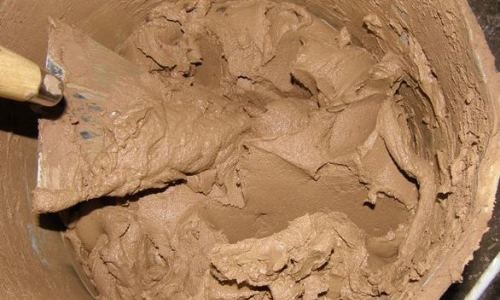
The peculiarity of the cement mortar involves its use only in case of heating with wood. Coal and higher -temperature fuel options will lead to the destruction of the coating. In addition, despite the easier manufacture, in comparison with the clay, this solution has a shorter life.
A solution from cement for installing tiles is prepared as follows:
- the cement is mixed with sand at the rate of 1: 3;
- water is added to the resulting mixture;
- for kneading, it is best to use a special nozzle for a drill - mixer;
- the finished solution should differ in plasticity and uniformity.
Tip: The process of shrinkage of a solution of cement and sand is very fast. To seal the composition, you can add a small portion of any washing powder to it.
Facing tiles
When conducting facing work on the installation of tiles, it is necessary to adhere to technical standards as accurately as possible. This will avoid in the future of undesirable violations of the integrity of the surface.
Stages of work:
- initially, a measured surface is measured and the amount of material is calculated, taking into account the corners and portals of the furnace;
- all tiles before installation must be soaked in water, which will significantly enhance the resistance of the material against high temperatures;
- the material is mounted from the corner of the furnace, in compliance with the laying line, if necessary, the guide beacons can be used in the work;
- the solution is applied over the entire surface of the Rumpa, at this moment it is worth carefully monitoring the density of the material, since the resulting air pockets can further lead to detachment of the cladding;
- when attaching severe tiles, it is necessary to increase the amount of solution and add a brick fight to it to improve adhesion;
- special metal pins must be inserted into the holes of Rumpa, while bent over the edges to improve the clutch of surfaces;
- a wire is fixed on the edges of the pins, which is connected to self -tapping screws previously mounted in the laying of the furnace;
- tiles are associated with each other and with the surface of the furnace with the help of wire;
- the hollow space between the Rumpa and the surface of the furnace is filled with crushed stone or broken brick.
After laying the first row, the rest are installed in a similar way in compliance with the gap on the seam. At the end of the work, all seams are thoroughly wiped with a solution based on gypsum. To give monolithic to the drawing, you need to add a syncuse with the main material of the color to the grout.
- During operation, you should pay attention to the different size of the tiles and the difference in shades. It will not be difficult to cope with the inconsistency of the size of facing materials. It is enough to use the grinder and process the edges with a rashpil. Before the grinding procedure, a small bevel must be made on the surface of the tile.
Tip: if you need to cut the tile - before the procedure, it is previously cut off on the front surface. Otherwise, you can get schisms along the edges of the seam.
- As for the color scheme, the formation of a picture with the smallest transitions between tiles of different shades is considered harmonious. Specialists in the field of furnaces facing the use of the most classic way of distributing color scheme from dark to lighter colors. The dark gamut should be used at the bottom of the furnace. This solution is due to the fact that the soot from the fire will gradually settle on the surface of the tiles and on darker versions it will be less noticeable.
- Do not throw tiles with defects (chips, violation of the integrity of the pattern, cracks). All of them can be useful in the area of \u200b\u200badjacency to the surface of the wall, or other inaccessible places.
The stove lined with tiles is not only a tribute to fashion, but also the solution to the issue of the quality of heating of the room. Possessing high indicators of heat transfer, strength and environmental friendliness, they can be an excellent option for decorating a heating device.

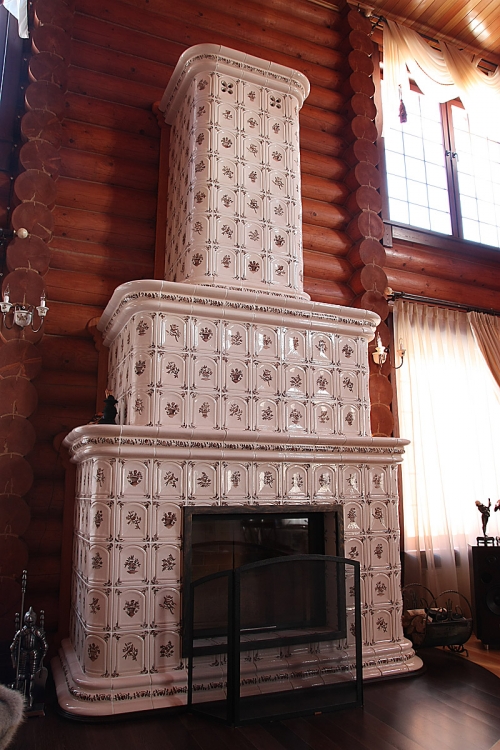
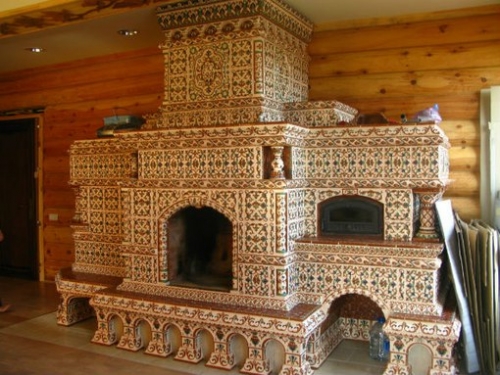
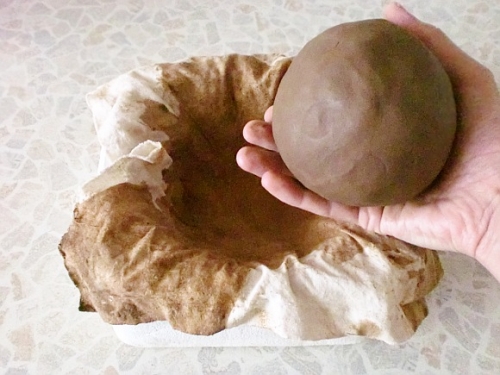
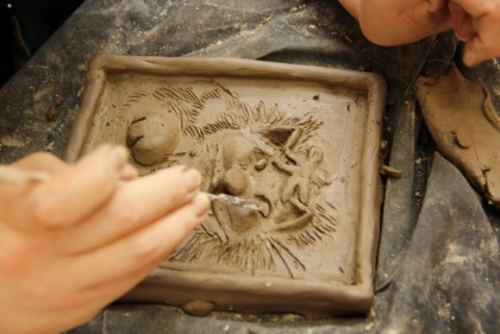
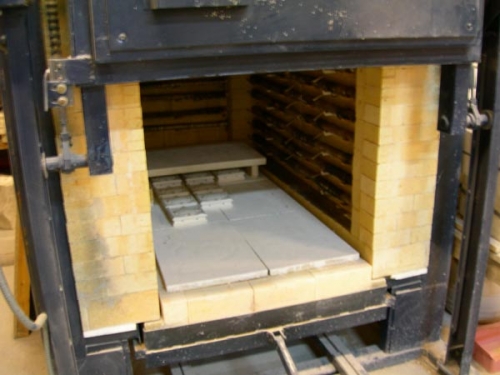
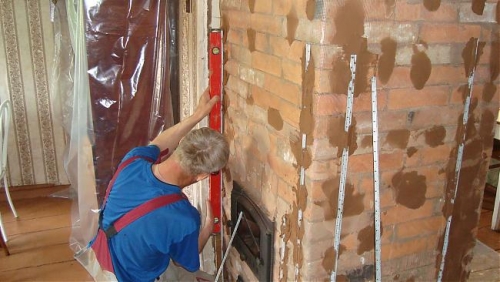

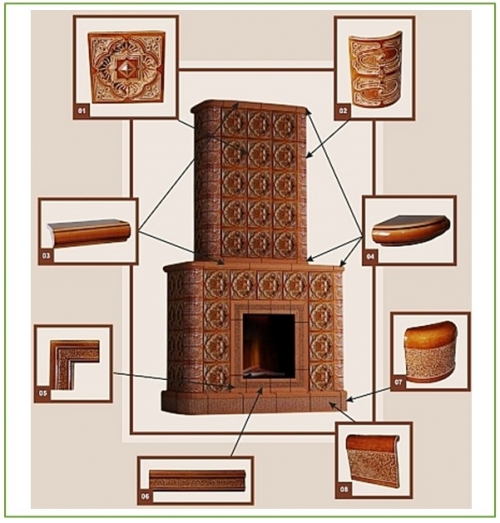
cool on!
cool on!
Good afternoon. I found on the site
Good afternoon. I found a tile stove on the site. Tell me, someone is familiar with this manufacturer. As a quality? This model https://Centrkaminov.ru/catalog/28654/